Bones and all: a new critically endangered Pantepui species of Stefania (Anura: Hemiphractidae) and a new osteological synapomorphy for the genus
- PMID: 37231482
- PMCID: PMC10210337
- DOI: 10.1186/s40851-023-00209-6
Bones and all: a new critically endangered Pantepui species of Stefania (Anura: Hemiphractidae) and a new osteological synapomorphy for the genus
Abstract
The hemiphractid frog genus Stefania is one of the many ancient (near-) endemic lineages of vertebrates inhabiting the biodiverse Pantepui biogeographical region in the Guiana Shield Highlands of northern South America-the famous "Lost World" of Arthur Conan Doyle. Previous molecular analyses of the genus Stefania have indicated that species boundaries and phylogenetic relationships are often incongruent with morphological traits in that clade. A substantial number of "taxonomically cryptic" species, often microendemic, remain to be described. This is notably the case for an isolated population from the summit of Wei-Assipu-tepui, a small table-top mountain at the border between Guyana and Brazil. That population was previously known as Stefania sp. 6 and belongs to the S. riveroi clade. The new species is phylogenetically distinct, but phenotypically extremely similar to S. riveroi, a taxon found only on the summit of Yuruaní-tepui in Venezuela and recovered as sister to all the other known species in the S. riveroi clade. The new taxon is described based on morphology and osteology. Data about genetic divergences within the S. riveroi clade are provided. A new synapomorphy for the genus Stefania is proposed: the presence of a distal process on the third metacarpal. Amended definitions are offered for the three other species in the S. riveroi clade (S. ayangannae, S. coxi, S. riveroi). The new species should be listed as Critically Endangered according to IUCN criteria.
Keywords: Endemism; Genetic distances; Homoplasy; Morphology; Osteology; Symplesiomorphy; Systematics; Taxonomy; µCT scanning.
© 2023. The Author(s).
Conflict of interest statement
Not applicable.
Figures


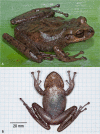
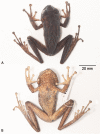
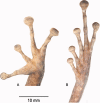

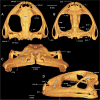

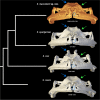

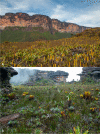
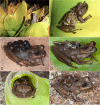
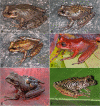
References
-
- Carreño R, Nolla J, Astort J. Cavidades del Wei-Assipu-Tepui, Macizo del Roraima. Brasil Bol Soc Venez Espeleol. 2002;36:36–45.
-
- Villarreal O, Señaris C, DoNascimento C. Contribución al conocimiento faunístico del Wei-Assipu-Tepui, Macizo del Roraima, con énfasis en la anurofauna y opiliofauna. Bol Soc Venez Espeleol. 2002;36:46–50.
-
- Señaris C, DoNascimento C, Villarreal O. A new species of the genus Oreophrynella (Anura; Bufonidae) from the Guiana Highlands. Pap Avulsos Zool. 2005;45(6):61–67. doi: 10.1590/S0031-10492005000600001. - DOI
-
- Kok PJR, Means DB, Bossuyt F. A new highland species of Pristimantis Jiménez de la Espada, 1871 (Anura: Strabomantidae) from the Pantepui region, northern South America. Zootaxa. 2011;2934:1–19. doi: 10.11646/zootaxa.2934.1.1. - DOI
Grants and funding
LinkOut - more resources
Full Text Sources

